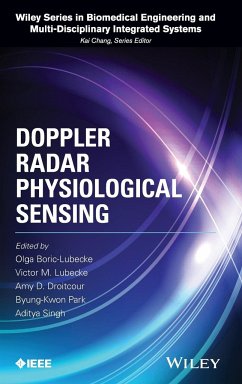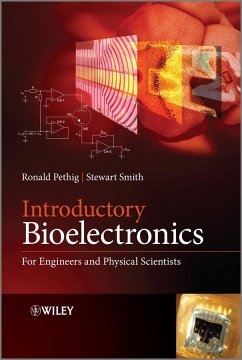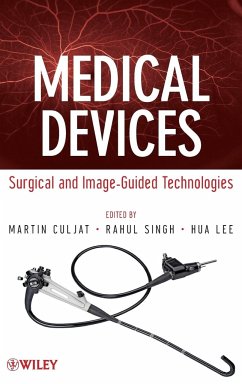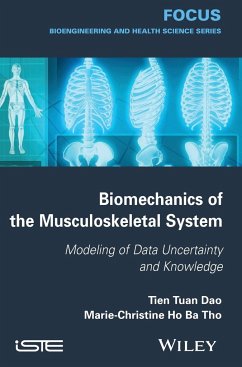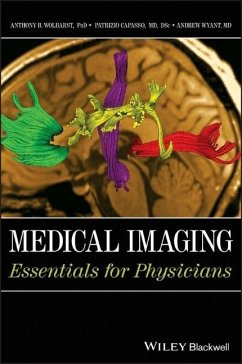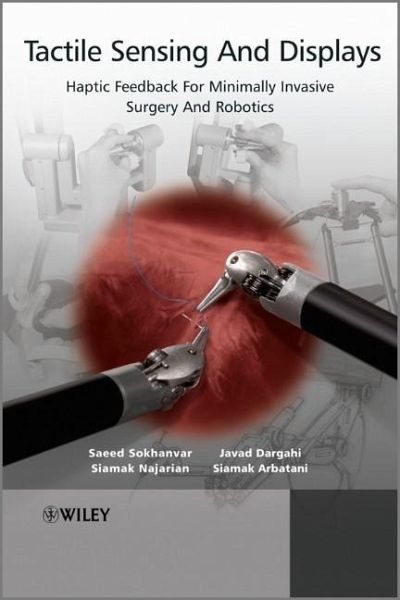
Tactile Sensing and Displays
Haptic Feedback for Minimally Invasive Surgery and Robotics
Mitarbeit: Dargahi, Javad; Sokhanvar, Saeed; Najarian, Siamak; Arbatani, Siamak
Versandkostenfrei!
Versandfertig in über 4 Wochen
114,99 €
inkl. MwSt.
Weitere Ausgaben:

PAYBACK Punkte
57 °P sammeln!
Comprehensively covers the key technologies for the development of tactile perception in minimally invasive surgeryCovering the timely topic of tactile sensing and display in minimally invasive and robotic surgery, this book comprehensively explores new techniques which could dramatically reduce the need for invasive procedures. The tools currently used in minimally invasive surgery (MIS) lack any sort of tactile sensing, significantly reducing the performance of these types of procedures. This book systematically explains the various technologies which the most prominent researchers have prop...
Comprehensively covers the key technologies for the development of tactile perception in minimally invasive surgery
Covering the timely topic of tactile sensing and display in minimally invasive and robotic surgery, this book comprehensively explores new techniques which could dramatically reduce the need for invasive procedures. The tools currently used in minimally invasive surgery (MIS) lack any sort of tactile sensing, significantly reducing the performance of these types of procedures. This book systematically explains the various technologies which the most prominent researchers have proposed to overcome the problem. Furthermore, the authors put forward their own findings, which have been published in recent patents and patent applications. These solutions offer original and creative means of surmounting the current drawbacks of MIS and robotic surgery.
Key features:-
Comprehensively covers topics of this ground-breaking technology including tactile sensing, force sensing, tactile display, PVDF fundamentals
Describes the mechanisms, methods and sensors that measure and display kinaesthetic and tactile data between a surgical tool and tissue
Written by authors at the cutting-edge of research into the area of tactile perception in minimally invasive surgery
Provides key topic for academic researchers, graduate students as well as professionals working in the area
Covering the timely topic of tactile sensing and display in minimally invasive and robotic surgery, this book comprehensively explores new techniques which could dramatically reduce the need for invasive procedures. The tools currently used in minimally invasive surgery (MIS) lack any sort of tactile sensing, significantly reducing the performance of these types of procedures. This book systematically explains the various technologies which the most prominent researchers have proposed to overcome the problem. Furthermore, the authors put forward their own findings, which have been published in recent patents and patent applications. These solutions offer original and creative means of surmounting the current drawbacks of MIS and robotic surgery.
Key features:-
Comprehensively covers topics of this ground-breaking technology including tactile sensing, force sensing, tactile display, PVDF fundamentals
Describes the mechanisms, methods and sensors that measure and display kinaesthetic and tactile data between a surgical tool and tissue
Written by authors at the cutting-edge of research into the area of tactile perception in minimally invasive surgery
Provides key topic for academic researchers, graduate students as well as professionals working in the area



